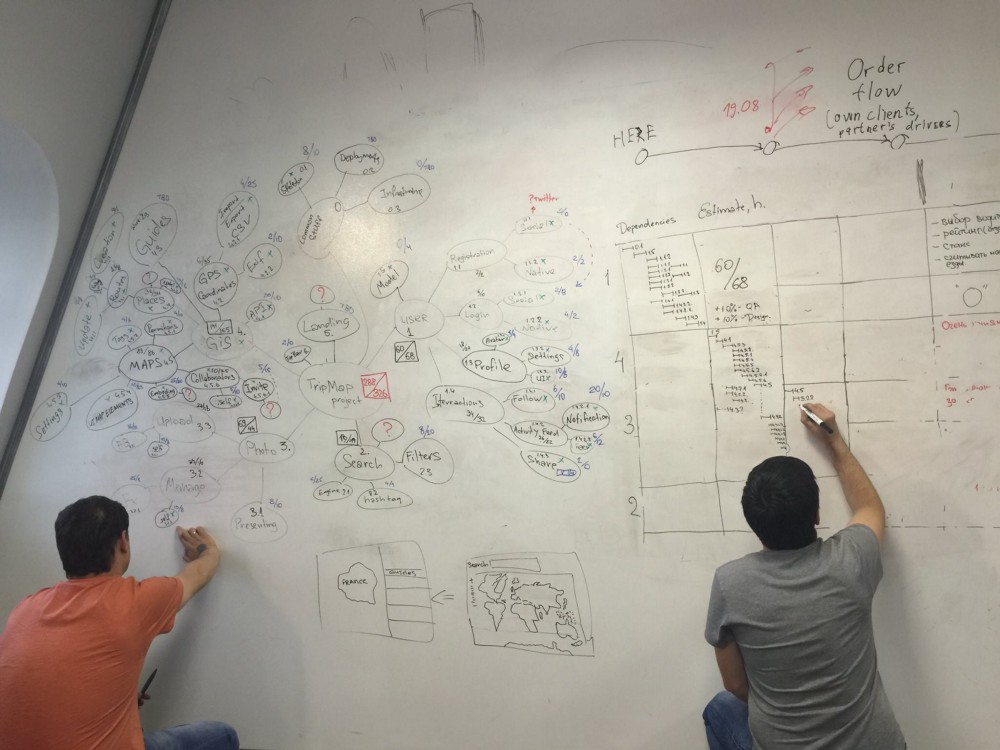Checklist IT-outsourcing: working without risks

From the translator: the original article was written by Alexander Shporod for the blog of his company Django Stars. They develop mobile applications, and share their experiences with readers.
Outsourcing in IT has a number of advantages: for example, it allows you to save money and, if necessary, get the help of experts in various areas. Nevertheless, there are problems, risks, which are very difficult to avoid, if at all possible. But if you know about them, you can significantly reduce their impact. How? About this and talk.
Skillbox recommends: Practical course "Management of digital-projects . "
We remind: for all readers of "Habr" - a discount of 10,000 rubles when recording for any Skillbox course on the promotional code "Habr".
Threat 1. The partner does not have enough strength or experience to complete your project.

If a third-party company or specialist is involved in the project, and the development almost entirely goes to outsourcing, then the question arises: “Are these people able to complete the project?” Most experts everywhere talk about their capabilities, knowledge and experience, but There are often problems with this.
How to make sure that you are attracted to the work of a really strong team or specialist, and not eloquent?
Solution
It is necessary to explore the potential of a potential partner Here is what you need to consider first:
- The maturity of a company or a specialist: how long they have been working in their field, what projects they have implemented, how many employees in the company.
- The number of large projects and significant customers in relation to their total number.
- The site of the company. Often, companies indicate the basic facts about themselves on the site, and check them out easily.
- Social activity in the media. Leaders in their field often share experiences and knowledge in articles for various media.
- The level of specialists in the company, as well as the “balance of power”: does the company have enough people and opportunities to fulfill your order (for example, to create a mobile game)?
- Reviews of the company in the network.
- If possible, be sure to talk with current or former customers of this company.
- If possible, talk to the responsible specialists personally: so you will understand whether you can establish communication, which is extremely important when transferring projects to outsourcing.
- Ask to write a test code for the implementation of your project.
Threat 2. Loss of control

There is no doubt that in some cases, companies lose control of their projects when they go to outsource. Lack of communication and visible results are the first signs of a problem.
Decision
- Before starting, discuss how you will interact, as well as methods to be used in the implementation of the project.
- Find out what work methods your partner used before. What are their pros and cons, what is allowed to achieve?
- Make sure that your partner can offer the right (for you) solutions in different situations.
- If you prefer other methods of solving work tasks, but you, for example, have less experience, leave the partner to work: intervening in this case means disrupting the normal course of the project.
- Require full transparency of the process, including following the points of the plan and observing deadlines. As a customer, you must have access to routine materials.
Threat 3. Binding to the supplier (vendor lock-in)

The point is that your partner for the project uses some proprietary tools that can not be replaced with anything in the future. Analogy: in the village there is a single Internet provider that works very poorly, but which will not work, because there is no alternative (this situation is well shown in South Park).
Decision
- Check the possibility of maintaining the project in working condition after its completion on its own or by the efforts of other partners. Most "white" companies will not build any proprietary solutions based on Python, Ruby, .Net or Java - they work with popular systems, frameworks, applications. Do market research: is there an alternative to the current partner?
- Make sure that the code written by the partner’s specialists will be ready for processing by other specialists.
- Retain ownership of all the results of the partner’s work, check that any project components are available to you at any time.
- Document all processes, ask for the same partner.
Threat 4. Hidden costs

Sometimes it happens that the cost of the work prescribed in the contract, ultimately exceeds the originally planned amount. This happens if you have not foreseen all the important points.
Decision
- Pay attention to how the company assesses the various stages of the project and the main thing - the cost of individual works, as well as the project as a whole.
- What types of contracts does the outsourcing company accept: fixed cost, fixed cost with a subscription for further project support or something else?
- Check out such moments as the presence of VAT and other "hidden" payments. It is better to do this with a professional accountant / economist.
- Define your own project requirements, make them as clear as possible for the partner. This will allow you to calculate the budget without the threat of receiving additional expenditure items after its completion.
Threat 5. Information Security

It is critical to retain rights to the results of the company's outsourcing. This is your intellectual property, and it must remain so.
Decision
- Do you sign up with NDA partners?
- Does the partner company have experience with important customer data?
- The presence of successfully completed partner projects executed for large companies or the public sector is a big plus.
Threat 6. Where is the partner's office?

Outsourcing is good when you are in the same time zone with a partner. Otherwise, doing business with another company can be a daunting task.
Decision
- The time zone and mode of operation of the partner should coincide with yours.
- Distance and availability: can you visit the partner’s office if necessary and without any problems?
- Which bank does your partner use for work where he is registered?
- What payment methods does the partner use?
- Where is the company you work with registered?
- Is the political and economic situation in the country of registration of the partner stable?
In fact, there are indeed a lot of important moments when working with a company or individual specialists at an outsourcing. We have listed the key points above, so if you stick to the plan and work, considering everything said, there should be no problems.
Skillbox recommends:
- Practical course "Mobile Developer PRO" .
- Educational online course "Frontend-developer" .
- Online course "Java-developer" .
